Nuzzling Javelinas
It is springtime after-all
The other morning I saw two javelinas standing side-by-side in the desert just beyond my backyard. There were no other javelinas around. The two spent time in a common courtship behavior called "inhibited neck biting."
This series of photos shows the back and forth, as each javelina took turns nuzzling the other one. Javelinas are known as 'collared peccaries', named after the light ring of hair (the collar) that is visible behind their heads. Although they look like pigs thanks to their snouts, short legs, long canine teeth and body shape, they are not pigs. Pigs inhabit the Eastern Hemisphere. Javelina live in the Western Hemisphere. 40 million years of evolution separate the two species.
Being of tropical origin, peccaries are capable of breeding throughout the year and can have two litters per year when habitat and weather are favorable. In Arizona, breeding peaks in January, February, and March. You can learn more about these mammals from this fact sheet by the Arizona Sonora Desert Museum.
Although we see javelina commonly throughout the Tucson area and southern Arizona, they are actually recent arrivals to this area. A tropical species, there are no javelina bones found in archaeological sites and very little reference to javelinas in the records of early European settlers to this region.
Javelinas rely on their strong sense of smell and their acute hearing. They are omnivores, as anyone in Tucson without a fenced yard soon discovers. Garbage cans left out in the street are often subject to “inspection” by neighborhood javelinas.
Pet dogs are viewed as predators since coyotes prey on young javelinas, so javelinas may attack pet dogs when nearby. Knowing all of this, it takes some understanding to learn how to coexist with them. Javelinas are part of our local wildlife and entertaining to watch from a safe distance.
The javelinas spent a few minutes gently nibbling at each other and rubbing their heads together. Their relationship strengthened, the javelinas soon turned and sauntered off into the desert.
You can learn more about these desert animals from this UA Cooperative Extension fact sheet.
A special thank you to those of you who have already contributed to our Birdathon team in support of the Tucson Bird Alliance. So far we have received generous donations from Jill V., Ned H., Deb V., Alexa VB, Katrina S., Mary C., Marianne C., Barbara L., Edie Z., Mai S., Laura R., Jim S., Mary K., John S., Sue B., Danny G., Ray K., Elizabeth M, and Deanna M! Thanks to each of you!!
For more information about the Birdathon and to donate to our team, please go to https://tas.app.neoncrm.com/np/clients/tas/campaign.jsp?campaign=128&fundraiser=12602&


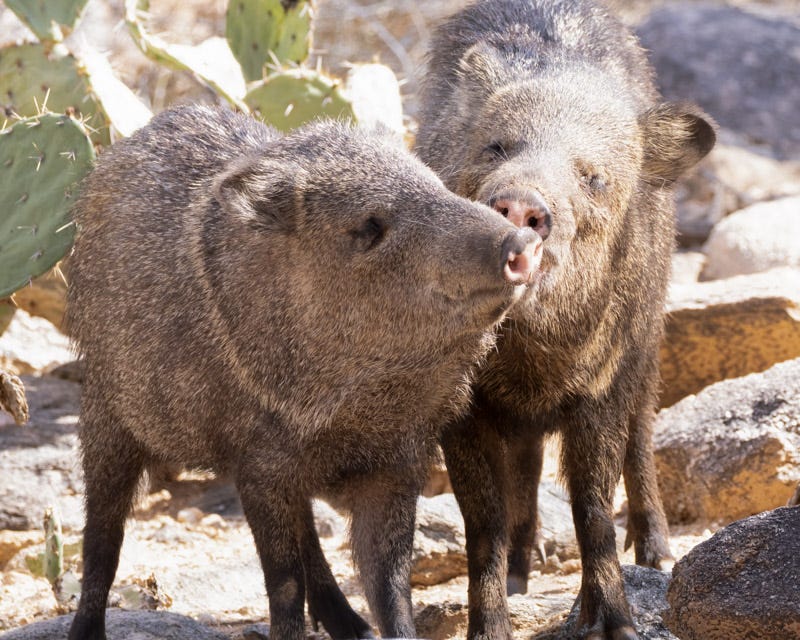
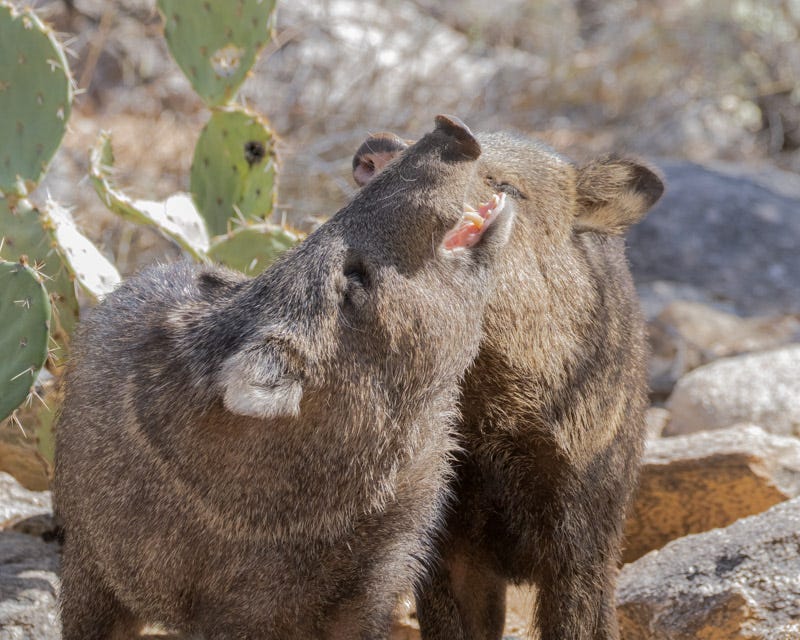

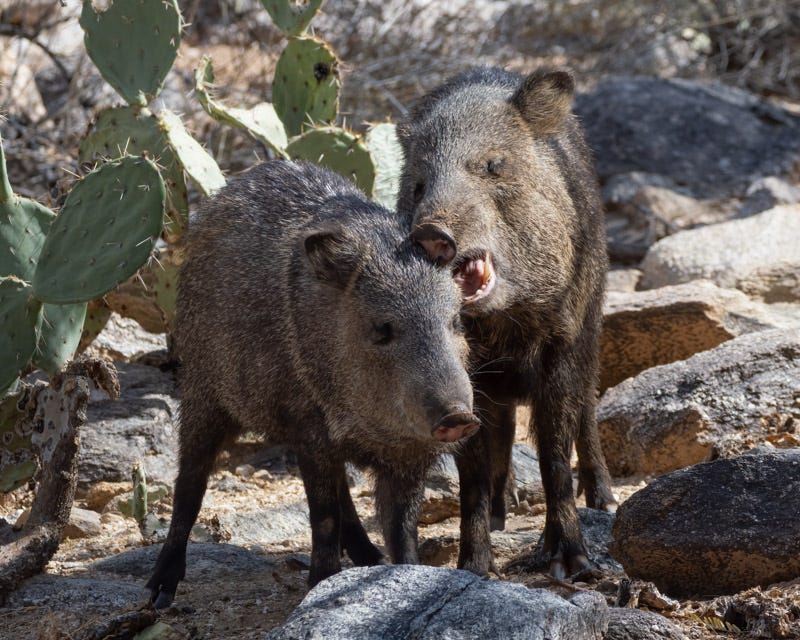
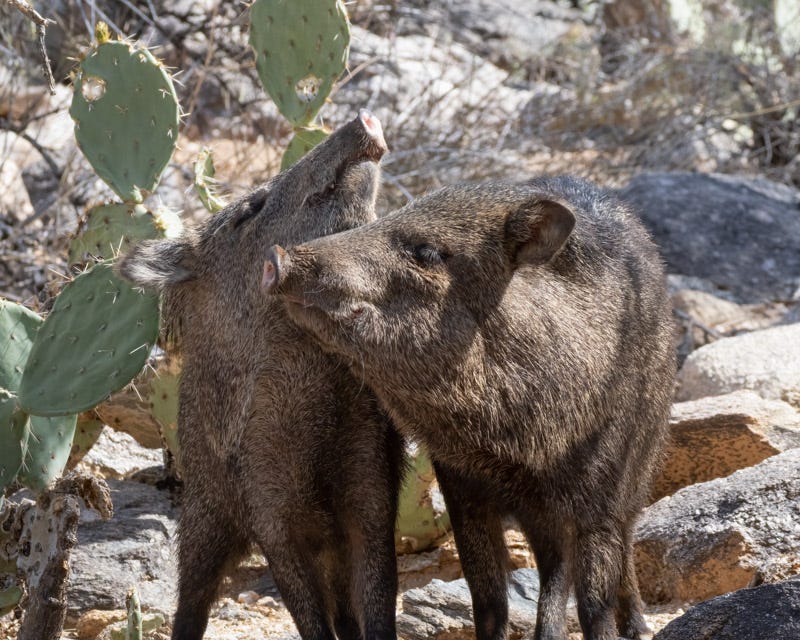
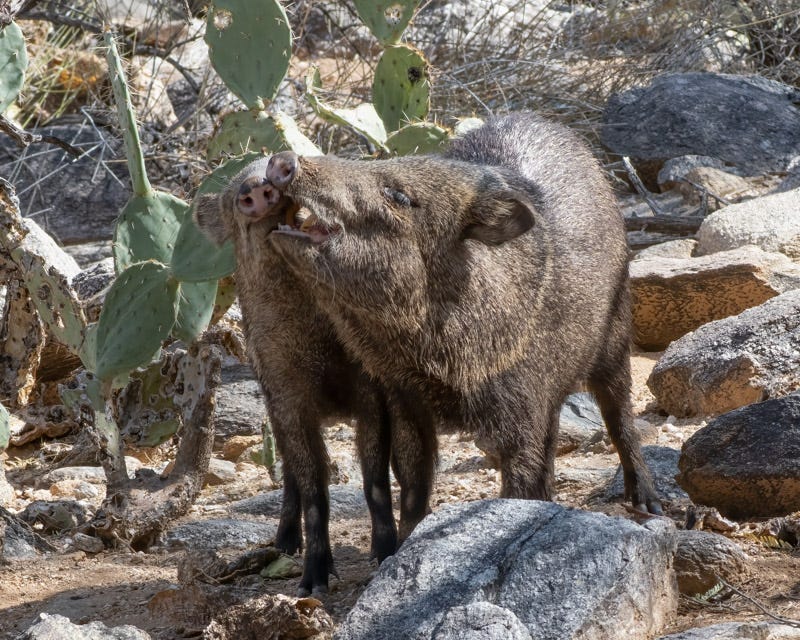
Strong sense of smell and a strong scent as well!
So cute. I love how they interact with each other!